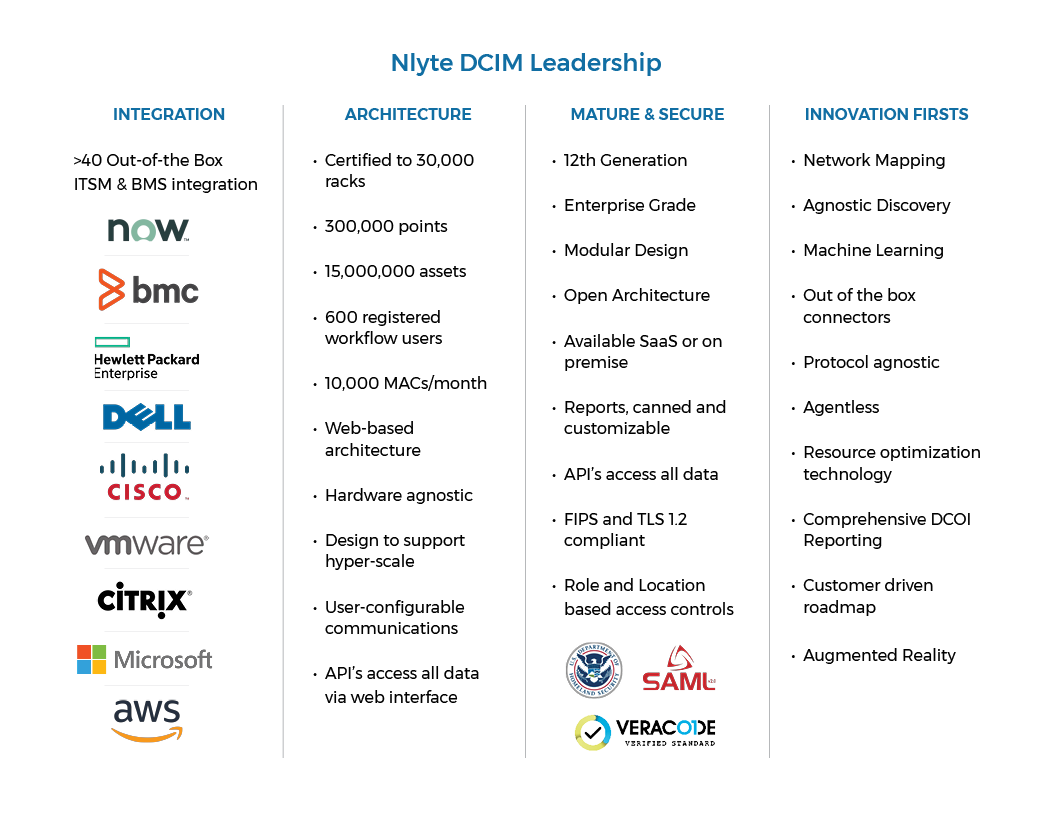What To Do When Your DCIM Leaves You
Published on October 29, 2021,
by
DCIM Replacement Strategy: What to Do Next
Losing support for your Data Center Infrastructure Management (DCIM) system can feel like a major setback—but it’s also an opportunity. Whether your vendor has sunset the product, stopped updates, or no longer offers support, it’s time to consider a proactive DCIM replacement strategy that ensures continuity, scalability, and innovation.
Many organizations initially adopted DCIM to move away from manual tools like spreadsheets and Visio diagrams. These systems helped manage capacity, track assets, and streamline workflows. But as your infrastructure evolves—with new hardware, virtualization, and hybrid environments—your DCIM must evolve too. If your current system can’t support new technologies or integrate with modern platforms, it’s no longer serving your needs.
So, what should you do when your DCIM leaves you?
Step 1: Reassess Your Needs
Start by revisiting why you implemented DCIM in the first place. Was it for capacity planning, asset tracking, energy efficiency, or compliance? Now, consider what your current and future needs are. Do you need better integration with ITSM platforms? Are you expanding into hybrid or edge environments? These questions will help define the scope of your next solution.
Step 2: Evaluate the Risks of Staying Put
Continuing with an unsupported DCIM system may seem like the path of least resistance, but it comes with hidden costs. You risk losing compatibility with new equipment, missing out on security updates, and facing increased downtime due to lack of vendor support. Over time, maintaining an outdated system becomes more expensive and less effective.
Step 3: Explore Modern DCIM Solutions
Today’s DCIM platforms offer far more than basic monitoring. Nlyte, for example, provides advanced features like machine learning, automated discovery, network mapping, and even augmented reality. These tools help you visualize your infrastructure, predict failures, and optimize performance in real time.
Nlyte also supports integration with leading platforms like ServiceNow and VMware, ensuring your DCIM works seamlessly with your broader IT ecosystem. And as part of Carrier’s portfolio, Nlyte benefits from ongoing innovation and investment in smart building technologies.
Step 4: Plan a Smooth Migration
Migrating to a new DCIM doesn’t have to be painful. With the right partner, you can transfer data, configure integrations, and train your team with minimal disruption. Nlyte offers migration support and best practices to help you transition smoothly and start realizing value quickly.
Step 5: Future-Proof Your Infrastructure
A modern DCIM solution isn’t just a replacement—it’s an upgrade. With better visibility, automation, and analytics, you can make smarter decisions, reduce costs, and support long-term growth. Your new DCIM should be scalable, secure, and ready to adapt as your data center evolves.
Don’t wait for failure to force your hand. If your DCIM provider has left you behind, now is the time to act. With a clear DCIM replacement strategy, you can regain control, reduce risk, and unlock the full potential of your infrastructure.

Learn more about
